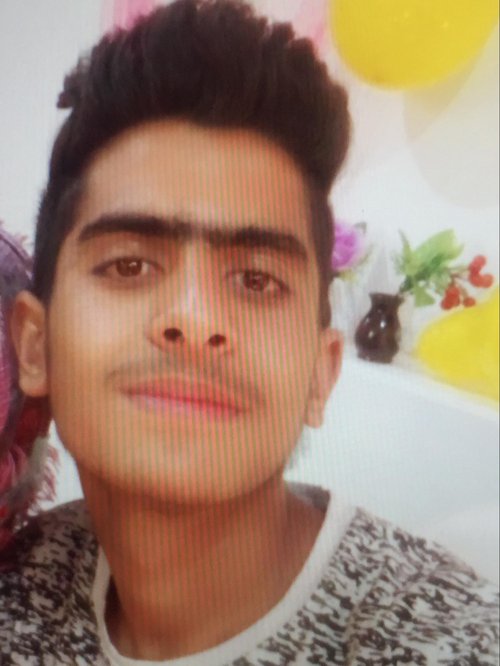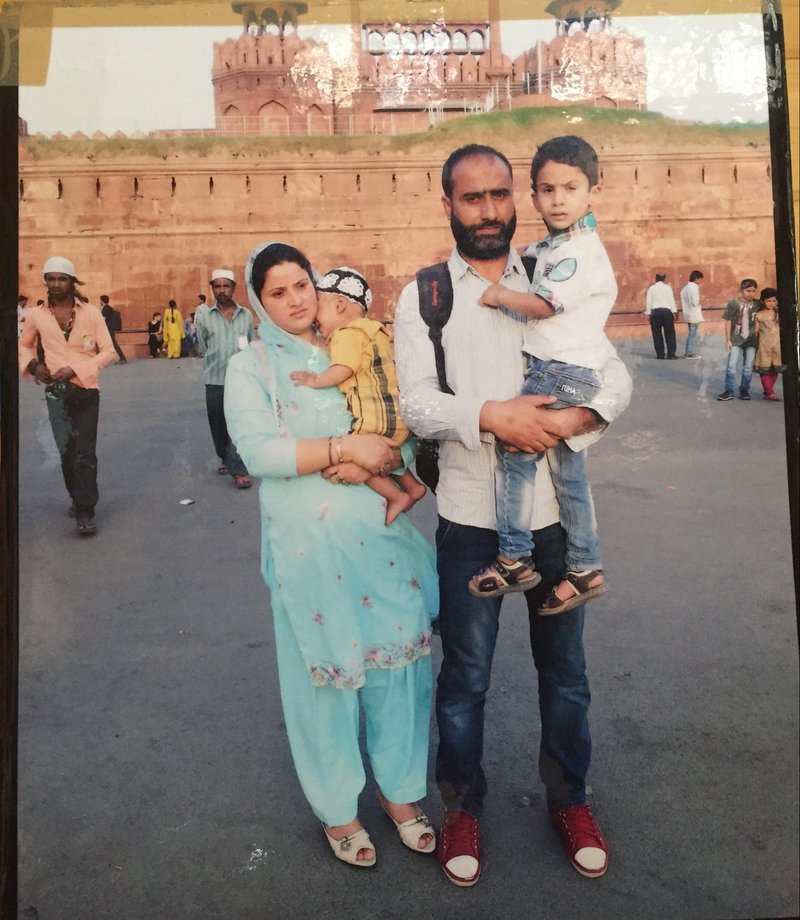Dozens of civilians have been killed by tear gas in the region – and their deaths are being brushed under the rug.
Asrar. “I was watching him from the balcony and called him to come have tea,” she recalled. “But he wanted to play another game.”
Asrar, who would have turned 19 this year, was a passionate cricketer. His friends even nicknamed him after Virat Kohli, the captain of India’s national cricket team. In August 2019, he was attacked by half a dozen police officers in riot gear as he played in the street in Srinagar, Kashmir’s largest city.
The day before the attack, the Indian government revoked the special status of Jammu and Kashmir, a Muslim-majority state that had remained a disputed territory, with the power to make its own laws, since 1947. Thousands of troops entered the region, political and religious leaders were detained and all lines of communication to the outside world were blocked.
Protests erupted across Kashmir, particularly in Srinagar, where Indian security forces and Kashmir police rounded on protesters with teargas shells and pellet guns. As people fled through the streets, Asrar was caught in the melee.
When Shaheena heard the gunshots, she ran outside. “My son was lying down unconscious on the ground and all I could remember was Asrar telling me ‘Mother, something has happened to my eyes’,” she said. “Those were his last words.”

Asrar was admitted to hospital in a critical condition and put into a medically induced coma before being placed on a ventilator. After a month, he died of his injuries.
When the family filed a complaint against the police, the department claimed that Asrar was hit by stones thrown by protesters, despite X-rays scans confirming a head wound from a tear gas canister.
“The police tried to strike a deal with us,” said Firdous Khan, Asrar’s father. “They offered us money and a job, but we will not settle for the death of our son.” More than a year after filing a police complaint, no formal investigation has been launched into his death.
openDemocracy contacted the Srinagar police department for comment but did not receive a response.
‘Zero accountability’
The Khan family is one of many to have lost a relative to police violence in Kashmir. In the past two years alone, at least 91 civilians have been killed by Indian security forces, according to the Jammu and Kashmir Coalition of Civil Society. Thousands more were killed in the two decades before, many of them caught in the conflict between India and Pakistan, which both lay claim to the terrority.
Since the Hindu nationalist Bharatiya Janata Party (BJP) swept into power in 2014 there has been a marked rise in violence in the region. Kashmiris, threatened by anti-Muslim sentiment stoked by the government and repeated military campaigns in the region, have agitated for greater independence from India. In response, reports of killings, arbitrary detentions and use of torture by security personnel in Kashmir have grown.
A report published in 2019 by the United Nations High Commissioner for Human Rights uncovered “allegations of serious human rights violations, notably excessive use of force by Indian security forces that led to numerous civilian casualties, arbitrary detention, impunity for human rights violations”.
India refused to accept the findings and claimed that no civilians were killed during its takeover of Kashmir. However, human rights monitors say that at least six civilians were killed by Indian troops in days following the move.
“The standard practice of police in Kashmir has been to obfuscate and mislead when its personnel are involved in human rights violations or other crimes,” said Kashmiri human rights defender Khurram Parvaiz.
“Denying deaths due to so-called ‘non-lethal weapons’ is similar and follows the same pattern of denial. There is zero accountability among armed forces including the police,” he added.
Weapons banned for war, but not civilians

Pellet guns and tear gas are frequently cited in reports of human rights violations in Kashmir. Although they are deemed “non-lethal” by the Indian government, they have been responsible for the deaths of over a dozen civilians and have left over a thousand people blinded between 2016 and 2018, according to Amnesty.
Despite the large number of casualties, Indian authorities continue to use pellet guns as a crowd-control weapon while also supplementing them with tear gas, which they claim is a less lethal alternative. More than 100,000 tear gas shells were used in Kashmir in 2016, a year which saw widespread protests across the region, and since then around 70,000 have been used on average every year.
The use of tear gas in war is banned by the Geneva Convention, but remains legal for law enforcement use. There have been dozens of reported cases of civilians being killed after being struck by tear gas canisters or inhaling its smoke but only a few families of the victims have managed to file cases in court; these are still waiting to be heard.
Despite claims that tear gas is a safe weapon to disperse crowds, a study of its use in almost a dozen countries found it can cause permanent injuries and even disabilities, including the functional loss of limbs.
According to the review, the greatest risk of fatalities occurs when projectiles are fired at head height. The targeting of individuals with tear gas is deemed “unlawful” in guidelines set by the United Nations Human Rights Commission.
Tear gas can also be fatal when fired in enclosed spaces. Although protests usually take place out in the open, canisters fired indiscriminately in densely populated areas can pose a risk to anyone in the neighbourhood.
She died within 45 minutes.
In August 2019, Fehmeeda Bano, 32, was preparing dinner while police were attempting to break up a demonstration a few metres away from her home. A tear gas canister shattered her kitchen window, filling the room with smoke. Fehmeeda staggered out before collapsing in a hallway.
Her husband, Rafiq Ahmad Shagoo, rushed towards her. “When I picked her up blood was coming out of her mouth. I took her to the hospital on a motorbike but the doctors were not able to revive her. She died within 45 minutes after reaching the hospital,” said Shagoo.
Shagoo said that when he tried to file a complaint against the police they refused to register it. To prove that his wife died from inhaling tear gas, he asked the Srinagar hospital where she had been taken for a death certificate, but at first they also refused.
It took several requests before they relented, giving the cause of death as an “acute lung injury” from inhaling toxic chemicals.
openDemocracy contacted Shri Maharaja Hari Singh hospital for comment but did not receive a response.
Thousands of cases in limbo

Shagoo has taken up a legal case against the police, but is deeply disillusioned by Kashmir’s broken justice system.
“I have no faith that justice will be delivered. I hear there are thousands of cases where people can’t even file a first report, but I still want to try,” he said.
Shah Faisal, a lawyer representing Shagoo in court, told openDemocracy that many victims’ families do not take legal action out of fear of reprisals from law enforcement.
A 1990 law that grants police and military forces in Kashmir draconian powers and effective immunity to prosecution in civilian courts presents a major obstacle to seeking justice for human rights abuses.
“Until now not even a single member of security personnel has been prosecuted in a civilian court,” said Khurram Parvaiz, who coordinates a coalition of Kashmiri civil society groups.
“The courts have betrayed the people. For example, in Tufail Mattoo’s case the family has been fighting for justice for ten years,” he added.
Mattoo was killed when a tear gas canister struck his head in 2010. He was 17 at the time.
Last month, Indian police charged an Indian army officer with killing three civilians in Kashmir in July and staging their deaths as a fake gunfight. Investigations of military personnel are rare and convictions even more so. Since 2001, the Jammu and Kashmir government has sought permission to prosecute military personnel for 50 cases of human rights abuses – all but three were dismissed by the ministry of state.
Shagoo is still waiting for his police complaint to be investigated. Before his wife’s death, he ran a craft shop in Goa. He would spend seven to eight months there and return to Kashmir before the monsoon season would start. Now, he has opened a small shop outside his house where he sells day-to-day essentials.
“I cannot afford to travel frequently for the hearings. I have to take care of my two children, aged ten and seven. They are too young to cope up with the loss,” he said.
Shagoo remembers that Fehmeeda was determined to see them again on the night she died. “One of the last things she said to the doctors was ‘I have two small children waiting for me’,” he said.
